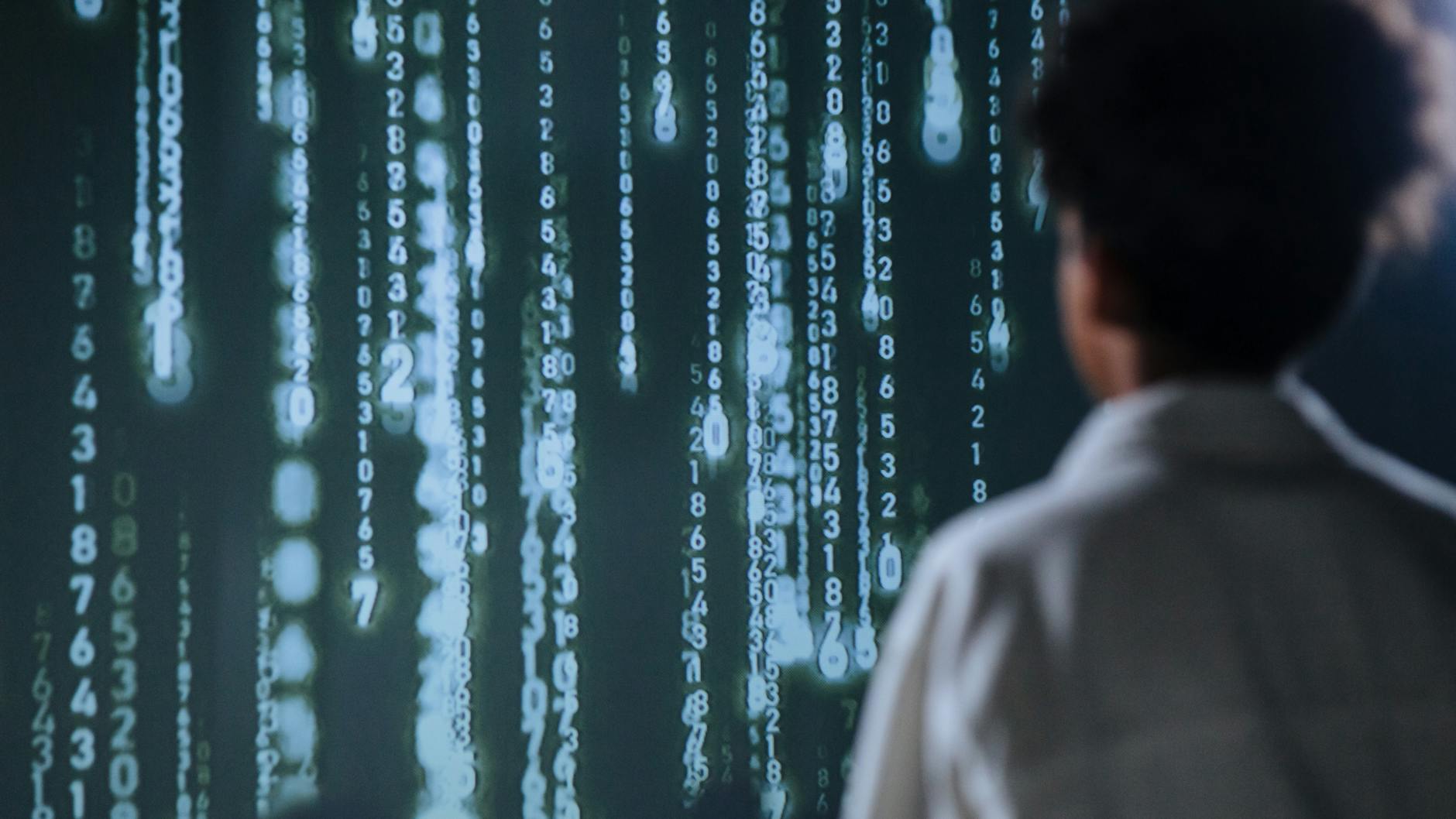When AI Listens: A New Frontier in Mental Wellness Amidst War and Stolen Glory
From Landmine Scars to Digital Confidantes: Navigating the Complexities of Modern Care
The human experience, a tapestry woven with threads of profound suffering, innovative healing, and unexpected acts of despoilment, is constantly being redefined. In a world grappling with the brutal realities of conflict, the burgeoning potential of artificial intelligence in addressing mental health crises, and the peculiar tales of historical artifacts changing hands, the 60 Minutes broadcast of April 7, 2024, offered a potent glimpse into these intersecting narratives. This report delves into the three distinct yet thematically linked segments: the enduring scourge of landmines in Ukraine, the transformative yet ethically charged landscape of AI in mental health, and the audacious theft of championship rings, revealing how technology, resilience, and even criminal enterprise shape our present and future.
Context & Background
The 60 Minutes episode of April 7, 2024, presented a multifaceted exploration of contemporary challenges and innovations. The first segment, focusing on the deadly landmines plaguing Ukraine, provided a stark reminder of the ongoing human cost of war. For years, the conflict in Ukraine has been characterized not only by kinetic warfare but also by the insidious and persistent threat of unexploded ordnance, particularly anti-personnel and anti-tank mines. These weapons, indiscriminate in their nature, continue to maim and kill civilians, long after the fighting has subsided. The sheer scale of contamination presents an immense humanitarian and logistical challenge, impacting everything from agricultural land to residential areas, and necessitating prolonged and dangerous demining operations.
Transitioning to a vastly different, yet equally significant, domain, the second segment introduced the growing role of Artificial Intelligence in mental health treatments. The demand for accessible and effective mental healthcare has outstripped traditional supply, leading to lengthy waiting lists and often prohibitive costs. In this vacuum, AI-powered chatbots and digital therapeutics have emerged as potential solutions, offering a scalable and often more affordable alternative for individuals struggling with conditions like anxiety, depression, and even more complex psychological issues. This technological advancement is not merely about convenience; it represents a paradigm shift in how mental wellness can be approached, leveraging algorithms and natural language processing to provide support, coping mechanisms, and even diagnostic insights.
The final segment of the broadcast veered into the realm of sports history and audacious crime. The report on a thief who melted down Yogi Berra rings highlighted a peculiar intersection of cultural heritage, athletic achievement, and criminal intent. Yogi Berra, a legendary figure in baseball, was a member of multiple World Series-winning New York Yankees teams. His championship rings represent not just personal triumph but also significant moments in American sporting history. The theft and subsequent dismantling of these artifacts speaks to a desire to erase or commodify historical significance, transforming tangible symbols of achievement into raw materials, a stark contrast to the life-affirming advancements in mental healthcare and the life-threatening realities of landmine warfare.
In-Depth Analysis
The Unseen Battlefield: Landmines in Ukraine
The report on Ukraine’s landmine crisis underscored the enduring legacy of conflict. Landmines are a silent, indiscriminate killer, capable of maiming or killing civilians years, even decades, after hostilities cease. In Ukraine, the conflict, which escalated significantly in 2022 but has roots extending back to 2014, has resulted in widespread contamination across vast swathes of territory. The sheer volume of mines, coupled with the complex nature of the terrain and the ongoing fighting, makes demining operations incredibly perilous and time-consuming. Experts estimate that Ukraine is one of the most heavily mined countries in the world. The impact is profound, extending beyond immediate casualties to encompass economic devastation as agricultural land remains unfarmable and infrastructure development is hampered. The psychological toll on communities living under the constant threat of these hidden dangers is also immeasurable. The efforts to clear these mines are often conducted by brave individuals and specialized organizations, working under extreme risk to restore safety and allow for the rebuilding of lives and communities.
The Digital Confidante: AI in Mental Health
The rise of AI in mental health is a response to a critical global need. The World Health Organization has repeatedly highlighted the growing mental health burden worldwide, exacerbated by factors like the COVID-19 pandemic and economic instability. Traditional mental healthcare models, while effective, often face challenges of accessibility, affordability, and stigma. AI-powered chatbots, such as those that might be integrated into platforms like the popular app “Woebot” or developed by companies like “Replika,” offer a different approach. These AI systems are trained on vast datasets of human conversation and psychological principles. They can engage users in supportive dialogue, provide cognitive behavioral therapy (CBT) techniques, offer mindfulness exercises, and track mood patterns. For individuals who may be hesitant to seek human therapy due to stigma, cost, or convenience, AI can serve as an initial point of contact or a supplementary tool. Dr. Kuznetzov, as referenced in the program title, likely represents the human element – the clinician or researcher at the forefront of this new wave of digital mental wellness, guiding its development and ensuring its ethical application.
Echoes of Triumph, Stolen in Steel: The Yogi Berra Rings
The story of the stolen Yogi Berra rings, as presented by 60 Minutes, delves into the cultural significance of sporting memorabilia and the unfortunate reality of its illicit trade. Yogi Berra’s championship rings, particularly those from his many World Series victories with the Yankees, are not merely pieces of jewelry; they are tangible artifacts that represent an era of unparalleled athletic dominance and cultural impact. Their theft and subsequent melting down by a criminal element speak to a disturbing trend of devaluing history for material gain. The act itself is a form of erasure, transforming unique historical markers into generic precious metals. This highlights a broader societal issue: how we value and protect cultural heritage, whether it be in the form of historical artifacts or the legacies of iconic figures. The investigation into such thefts often involves tracing the provenance of stolen goods and apprehending those who profit from them, a task that can be as complex as deciphering intricate code or navigating a minefield in its own way.
Pros and Cons
The integration of AI into mental health treatment, while promising, is not without its complexities. Examining the pros and cons provides a balanced perspective:
Pros of AI in Mental Health:
- Increased Accessibility: AI chatbots can be accessed 24/7, offering immediate support to individuals in distress, regardless of geographical location or time constraints. This is particularly beneficial for those in underserved areas or with busy schedules.
- Reduced Stigma: For individuals who feel embarrassed or anxious about seeking traditional therapy, interacting with an AI can be a less intimidating first step, helping to break down the barriers associated with mental health stigma.
- Affordability: While not always free, AI-powered mental health solutions are generally more affordable than traditional one-on-one therapy sessions, making mental healthcare more accessible to a wider population.
- Scalability: AI can serve a vast number of users simultaneously, offering a scalable solution to the growing demand for mental health support.
- Objective Data Collection: AI can meticulously track user interactions, mood patterns, and progress, providing valuable data for both the individual and potentially for researchers and clinicians (with appropriate privacy safeguards).
- Personalized Coping Strategies: Advanced AI can learn user preferences and tailor coping mechanisms and therapeutic interventions to individual needs, potentially enhancing treatment efficacy.
Cons of AI in Mental Health:
- Lack of Human Empathy and Nuance: While AI can simulate conversation, it cannot replicate the deep empathy, intuition, and nuanced understanding that a human therapist provides. Complex emotional states and subtle social cues can be difficult for AI to fully grasp.
- Privacy and Data Security Concerns: The collection and storage of sensitive personal mental health data raise significant privacy and security risks. Breaches or misuse of this data could have devastating consequences for individuals.
- Limited Scope for Severe Conditions: AI chatbots are generally best suited for mild to moderate conditions like anxiety and depression. They may not be equipped to handle severe mental illnesses, suicidal ideation, or crisis situations effectively, where immediate human intervention is crucial.
- Potential for Misinterpretation or Inaccurate Advice: AI models are only as good as the data they are trained on. Biases in the training data or algorithmic limitations could lead to inaccurate assessments or unhelpful advice.
- Ethical Dilemmas: Questions arise regarding accountability when AI makes errors, the potential for over-reliance on technology, and the impact on the therapeutic relationship.
- Digital Divide: Reliance on AI assumes access to technology and reliable internet connectivity, which may exclude vulnerable populations who lack these resources.
The landmine issue in Ukraine presents a different set of pros and cons, primarily in the context of humanitarian efforts:
Pros of Demining Efforts:
- Saving Lives and Preventing Injuries: The primary benefit is the direct reduction of casualties caused by landmines, making communities safer.
- Restoring Land Use: Clearing mines allows for the return of agricultural land, infrastructure development, and the resumption of normal community life.
- Economic Recovery: Reclaiming land for farming and development is crucial for Ukraine’s economic recovery and sustainability.
- Humanitarian Aid: Demining is a vital component of humanitarian aid, demonstrating international support and commitment to the well-being of affected populations.
Cons of Demining Efforts:
- Extreme Danger to Deminers: The work is inherently dangerous, with a high risk of injury or death for those involved in clearing mines.
- Cost and Resource Intensity: Demining is an expensive and labor-intensive process, requiring specialized equipment, training, and significant funding.
- Time-Consuming Nature: Due to the sheer volume of mines and the complexity of the terrain, clearing can take many years, even decades.
- Ongoing Conflict: In active conflict zones, demining efforts can be disrupted or made impossible by continued hostilities.
The theft of Yogi Berra rings, while seemingly a smaller-scale issue, also has a context of value and loss:
Pros of Reporting on Such Thefts:
- Raising Awareness: Brings attention to the importance of preserving historical artifacts and the illicit trade in stolen goods.
- Assisting Investigations: Public reporting can sometimes lead to tips or information that helps law enforcement apprehend suspects and recover stolen items.
- Deterrence: Highlighting such crimes can deter future acts of theft and vandalism of historical items.
Cons of Reporting on Such Thefts:
- Glorifying Criminals: Focusing too much on the perpetrators can inadvertently give them undue attention.
- Causing Further Distress: For the victims or those connected to the stolen items, detailed reports can cause additional emotional pain.
- Potential for Copycat Crimes: Reporting on unique methods of theft could inspire similar actions by others.
Key Takeaways
- The conflict in Ukraine continues to pose a severe humanitarian crisis due to widespread landmine contamination, impacting civilian safety, economic recovery, and daily life for years to come.
- AI-powered mental health solutions offer a promising avenue to address the global shortage of mental healthcare providers, increasing accessibility and reducing stigma for many.
- While AI in mental health offers significant advantages, concerns regarding human empathy, data privacy, and the limitations for severe conditions must be carefully managed.
- The theft and destruction of valuable sports memorabilia like Yogi Berra’s championship rings highlight the ongoing challenge of protecting cultural heritage from criminal exploitation.
- These diverse segments underscore the interconnectedness of human resilience in the face of conflict, technological innovation in care, and the persistent threat of crime impacting historical legacies.
Future Outlook
The future outlook for these intertwined narratives is one of ongoing evolution and critical decision-making. In Ukraine, the relentless work of demining will continue to be a top priority, likely seeing advancements in technology such as AI-driven mine detection and robotic clearing systems to expedite the process and reduce risk to human lives. International cooperation and sustained funding will be crucial for long-term success in liberating mined territories.
The domain of AI in mental health is poised for significant growth. We can anticipate more sophisticated AI models capable of more nuanced conversations, personalized interventions, and even early detection of mental health decline. Ethical guidelines and regulatory frameworks will need to mature rapidly to ensure responsible development and deployment, with a strong emphasis on data privacy and the preservation of human oversight. The goal will likely be to create a hybrid model where AI complements, rather than replaces, human therapeutic relationships, offering a more robust and accessible mental healthcare ecosystem.
The future of sports memorabilia will likely involve increased security measures, more sophisticated authentication processes, and potentially blockchain technology to track ownership and provenance, making it harder for stolen items to be laundered or altered. Public awareness campaigns and stronger international cooperation among law enforcement agencies will also be vital in combating the illicit trade of these cultural artifacts. The story of Yogi Berra’s rings serves as a cautionary tale, prompting a re-evaluation of how we safeguard the tangible symbols of our collective history and achievements.
Call to Action
The issues presented by 60 Minutes on April 7, 2024, are not merely subjects for passive consumption but urgent calls to engagement and action. For those concerned about the humanitarian crisis in Ukraine, supporting reputable demining organizations and advocating for continued international aid is paramount. Organizations like The HALO Trust or Mines Advisory Group (MAG) are at the forefront of this critical work, and their efforts require sustained financial and political backing.
Regarding the burgeoning field of AI in mental health, individuals are encouraged to explore reputable AI-powered mental wellness tools, while maintaining a critical perspective. Educating oneself about the capabilities and limitations of these technologies is crucial. Furthermore, advocating for robust ethical guidelines and data privacy protections for AI in healthcare is essential. Patients should also feel empowered to discuss their experiences with AI tools with their healthcare providers, contributing to a more informed and integrated approach to care.
Finally, for those who value our shared cultural heritage, actively supporting museums, historical societies, and organizations dedicated to the preservation of sports history is important. Be aware of the provenance of items you purchase and report suspicious activity related to the sale of potentially stolen artifacts to local authorities or relevant sports leagues. By staying informed and engaged, we can collectively contribute to a safer, healthier, and more historically conscious world.






